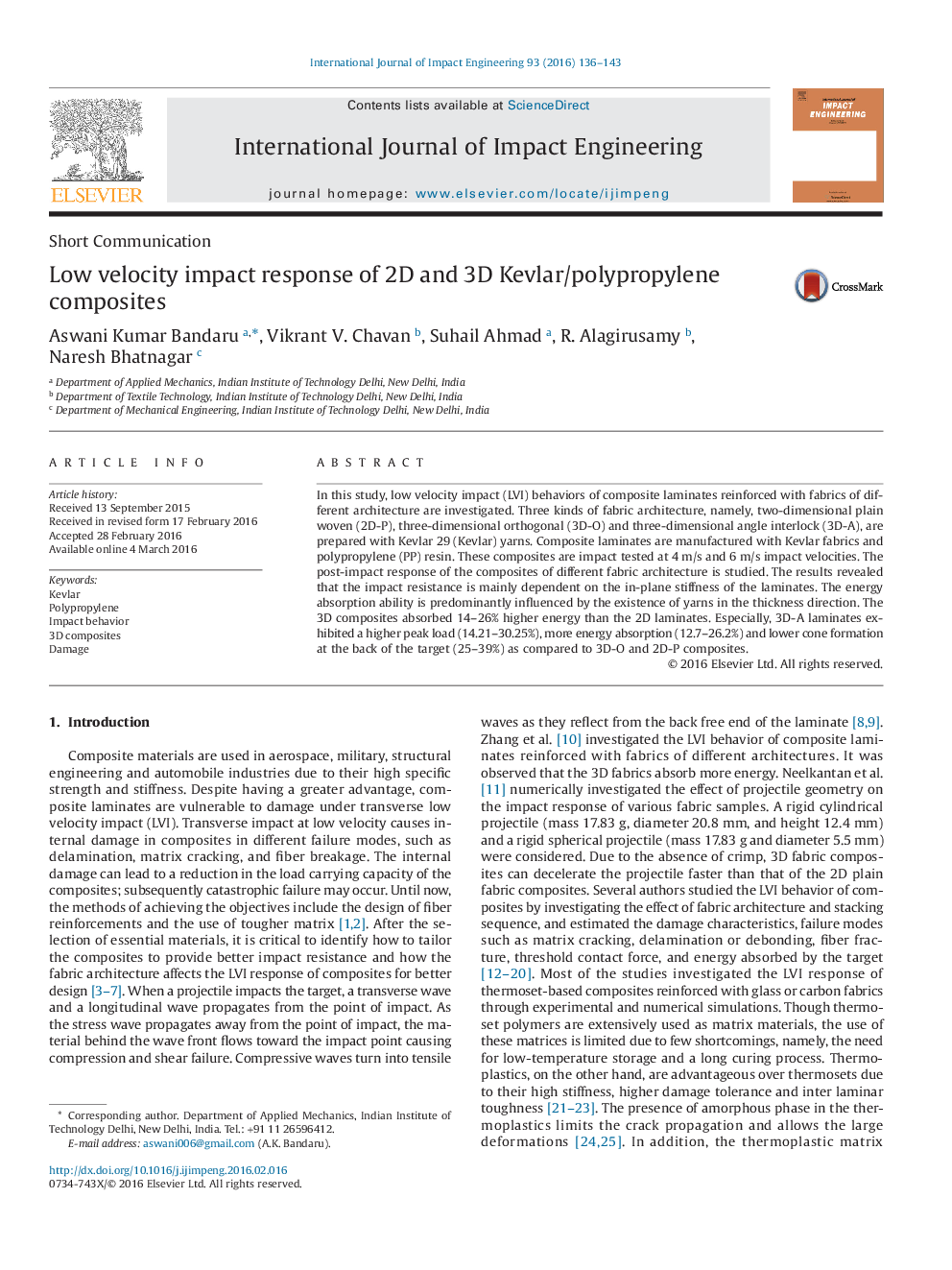| Article ID | Journal | Published Year | Pages | File Type |
|---|---|---|---|---|
| 782746 | International Journal of Impact Engineering | 2016 | 8 Pages |
•Improved interfacial property between Kevlar fabric and PP matrix.•The role of fabric architecture on the low velocity impact response of Kevlar/PP composites.•Improvement in the in-plane stiffness of the fabrics enhances the impact resistance.
In this study, low velocity impact (LVI) behaviors of composite laminates reinforced with fabrics of different architecture are investigated. Three kinds of fabric architecture, namely, two-dimensional plain woven (2D-P), three-dimensional orthogonal (3D-O) and three-dimensional angle interlock (3D-A), are prepared with Kevlar 29 (Kevlar) yarns. Composite laminates are manufactured with Kevlar fabrics and polypropylene (PP) resin. These composites are impact tested at 4 m/s and 6 m/s impact velocities. The post-impact response of the composites of different fabric architecture is studied. The results revealed that the impact resistance is mainly dependent on the in-plane stiffness of the laminates. The energy absorption ability is predominantly influenced by the existence of yarns in the thickness direction. The 3D composites absorbed 14–26% higher energy than the 2D laminates. Especially, 3D-A laminates exhibited a higher peak load (14.21–30.25%), more energy absorption (12.7–26.2%) and lower cone formation at the back of the target (25–39%) as compared to 3D-O and 2D-P composites.
